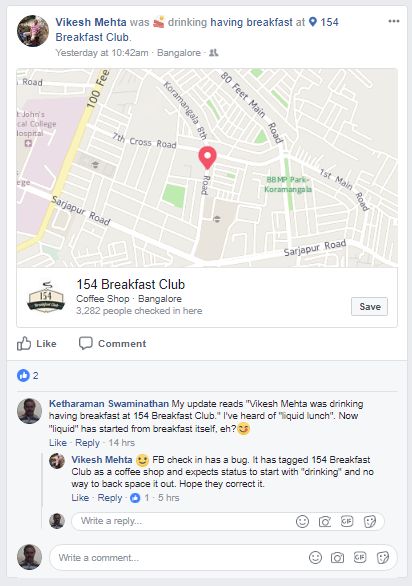As brands increasingly adopt personalization in their communications, what you see is not what I see.
Then there are other types of differences like:
- What you see on desktop is not what you see on mobile
- What you see yesterday is not what you see today
- Inconsistencies in what you see wherever
At first blush, it might seem that the discrepancy is caused by a bug in brand websites, apps or messages. But, if we dig deep, we might start getting the feeling that the difference is created by a deliberate action taken by the brand i.e. feature.
This post is about features that masquerade as bugs – or what I call #FeatureOrBug cases.
Since #FeatureOrBug is introduced by the brand owner – actively or passively – it’s likely to favor the brand. As we’ll see shortly, benefits of #FeatureOrBug to a brand include increase in engagement, reduction in cost, boost in sales, etc.
When it comes to the consumer, there are three degrees of #FeatureOrBug:
- Favorable
- Neutral
- Unfavorable
Consumers will probably like a first degree #FeatureOrBug. Therefore, it boosts customer loyalty.
Consumers are indifferent to a second degree #FeatureOrBug. In the worst case, they may be somewhat ticked off by it. But it still won’t affect their engagement with the brand in the future. Accordingly, a second degree #FeatureOrBug is neutral to customer loyalty.
Consumers are antagonized by a third-degree #FeatureOrBug. As a result, it adversely impacts customer loyalty.
In this post, I’ll illustrate the three degrees of #FeatureOrBug with one example of each.
#1. FACEBOOK CHECKIN – Favorable #FeatureOrBug
I saw the following update on my Facebook Feed.
If you notice the text carefully, it reads “Vikesh Mehta was drinking having breakfast…”.
Wot? Drinking breakfast?
Tongue in cheek, I replied, “I’ve heard of “liquid lunch”. Now “liquid” has started from breakfast itself, eh?:)”.
My friend thought it was a bug, reasoning that FB had tagged the said eatery as a coffee shop, thus forcing the status to begin with “drinking”.
I wasn’t so sure.
I’ve seen many such Facebook updates in the past. I didn’t know they were called FB Checkin and I’ve never reacted to one before. Both of that changed after I read this update. By displaying it in the manner that it did on this occasion, Facebook created awareness and generated engagement for Checkin. Ergo, it was probably a feature rather than a bug. Since I was happy to learn about a new Facebook “product”, this #FeatureOrBug was favorable to me.

#2. TIDEPLUS – Neutral #FeatureOrBug
The leading detergent brand TIDEplus recently ran a promo. You had to locate a code on the product’s pouch and enter it on PayTM’s website to earn a cashback on your PayTM wallet.
It was hard to find the code. But I located it finally on the inner surface of the detergent’s pouch.


I inferred one of the following two things from this exercise:
- TIDEplus expected to sell a certain number of products on offer (“offer packs”) during the offer period and shipped that quantity to the trade. But actual sales were lower than expected. As a result, many offer packs were still left on the shelves – one of which was the one I’d purchased. In an ideal world, a company would go back to the trade and recall all unsold offer packs. But, in the real world, I don’t know a single corporate paragon of virtue that does that and I don’t expect P&G, the owner of TIDEplus, to be the exception.
OR
- TIDEplus deliberately dumped more offer packs than it expected to sell during the offer period, hoping to capitalize on the strong possibility that the offer would attract a lot of additional consumers out of which only a few would bother to redeem it and fewer still would complain when they found out that the offer had expired by then. This is a shady practice. Notwithstanding the number of brands who follow it – and there are many – this practice tarnishes the brand image.
Since I’d no way of knowing which of the two things had really happened, I gave the benefit of doubt to the brand. While I’m now a little wary of TIDEplus, I’m not upset that badly that I’ll stop buying the product in future.
On a side note, sophisticated CEM solutions are now available that help brands estimate in advance how much sales uplift they can get by running a certain customer engagement program. One of our customers has such a solution. Brand managers who need help in this space can feel free to contact us.

Spoiler Alert: Some #FeatureOrBug shenanigans can turn a brand advocate to an ex-customer.
Watch this space!
Author : Ketharaman Swaminathan
Website : GTM360
